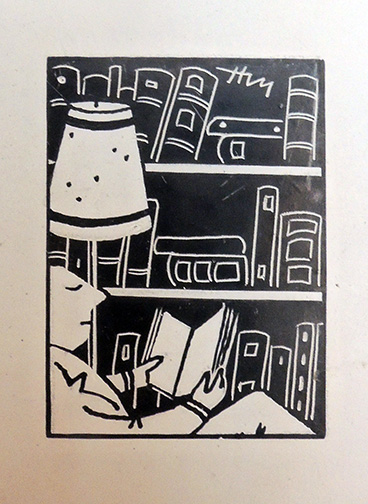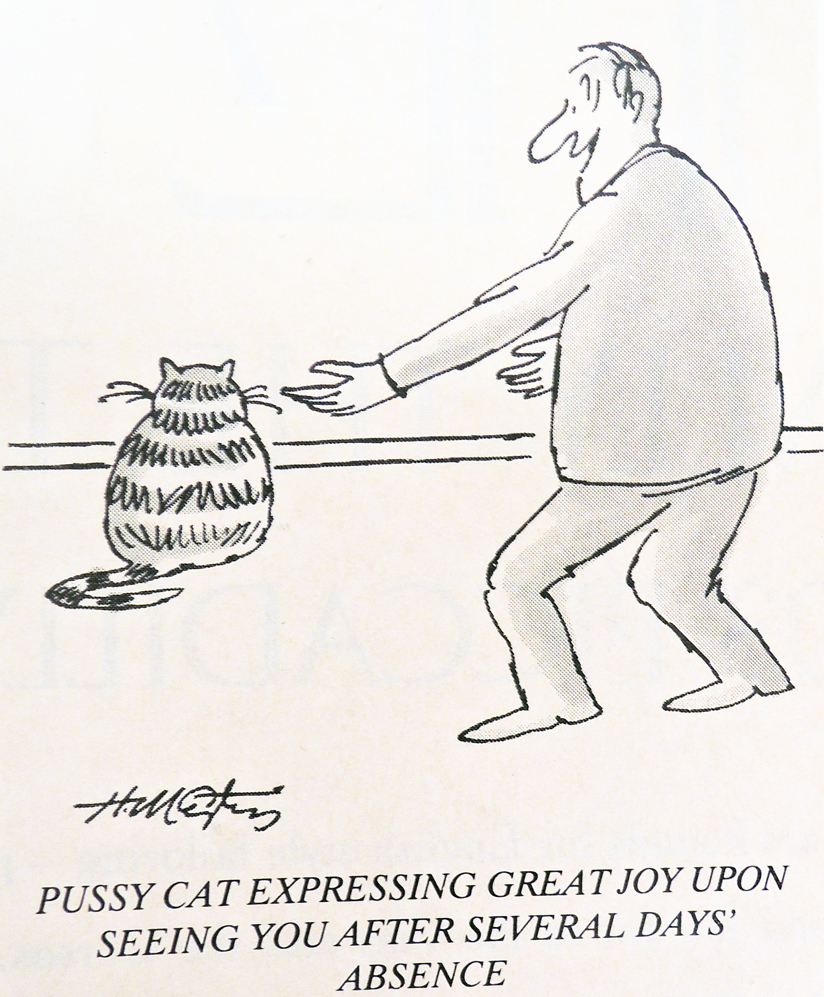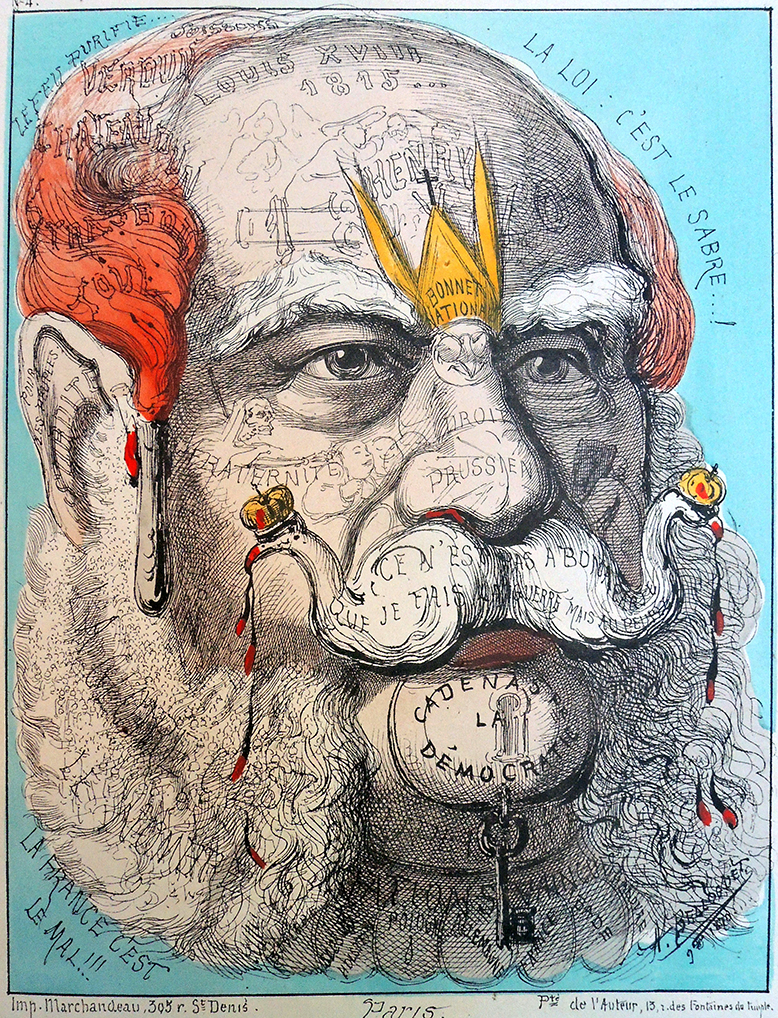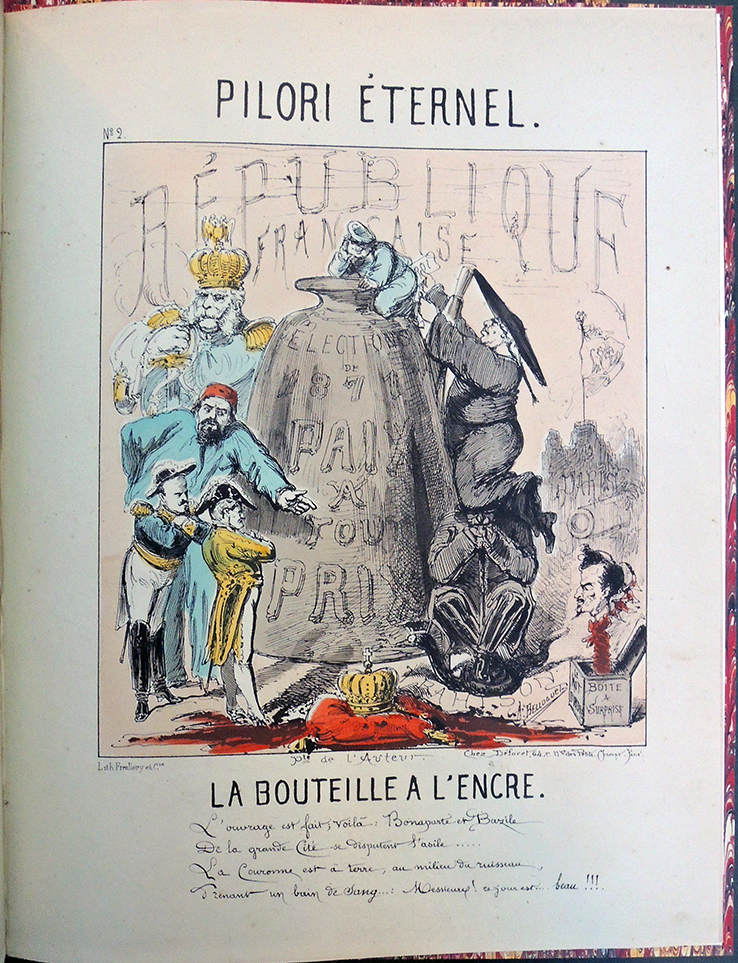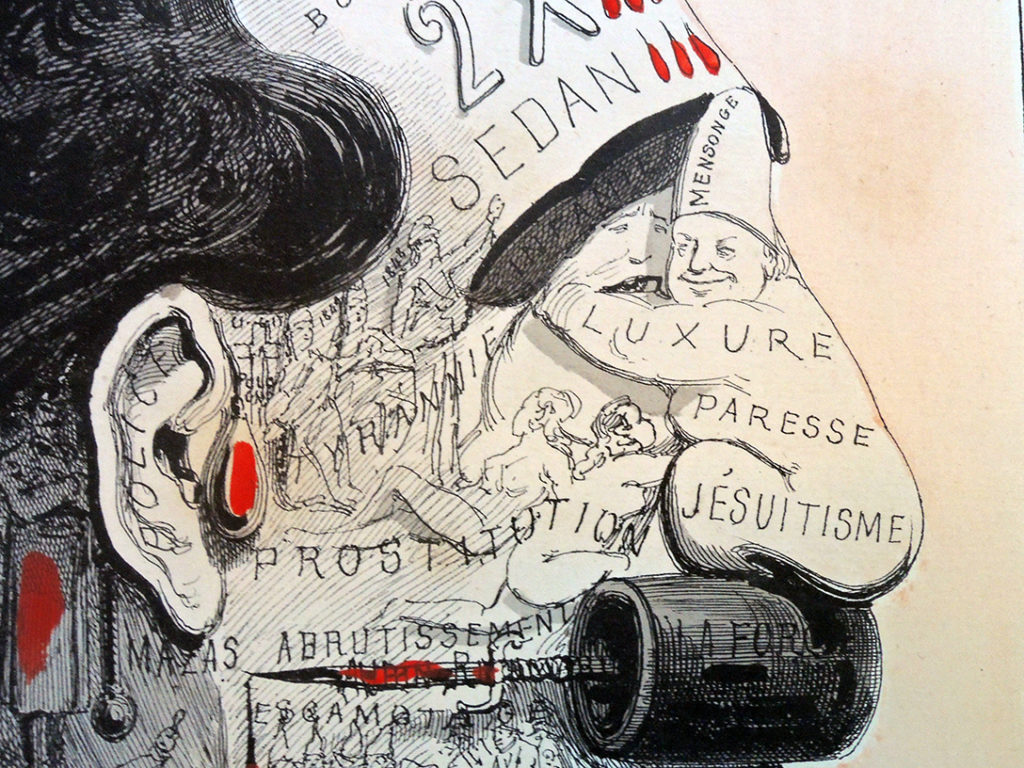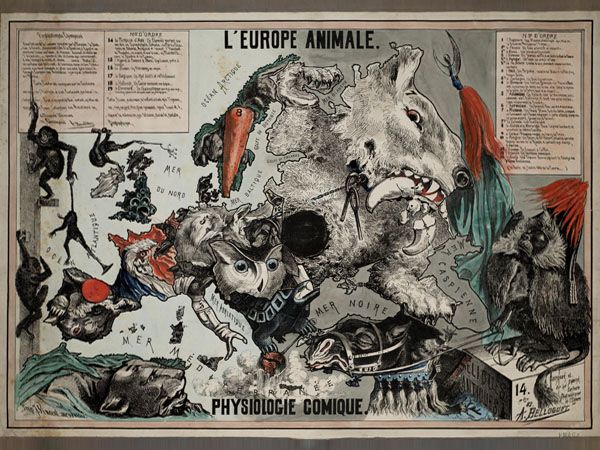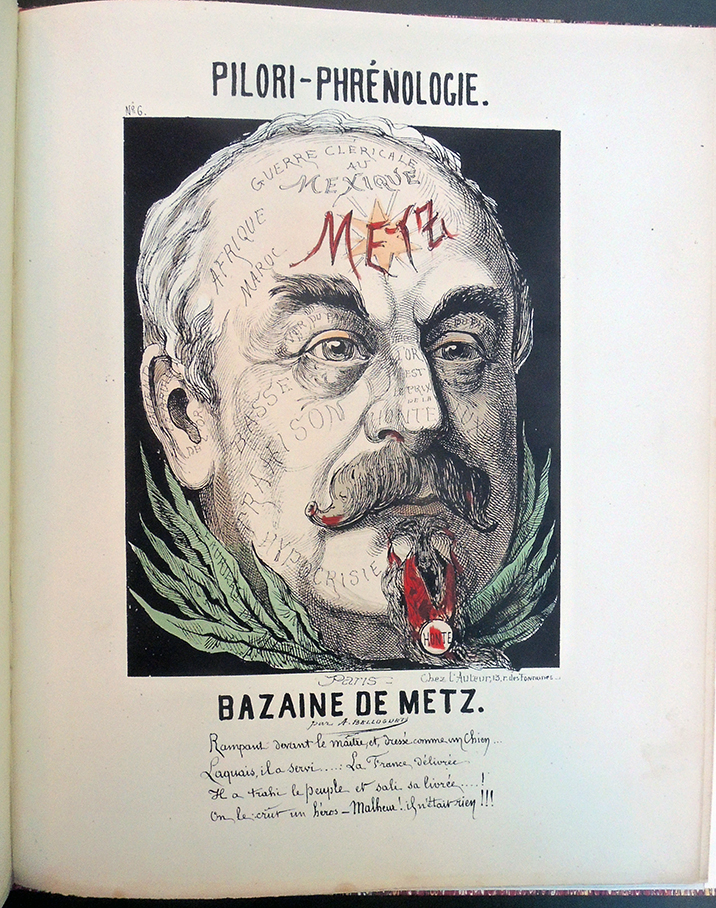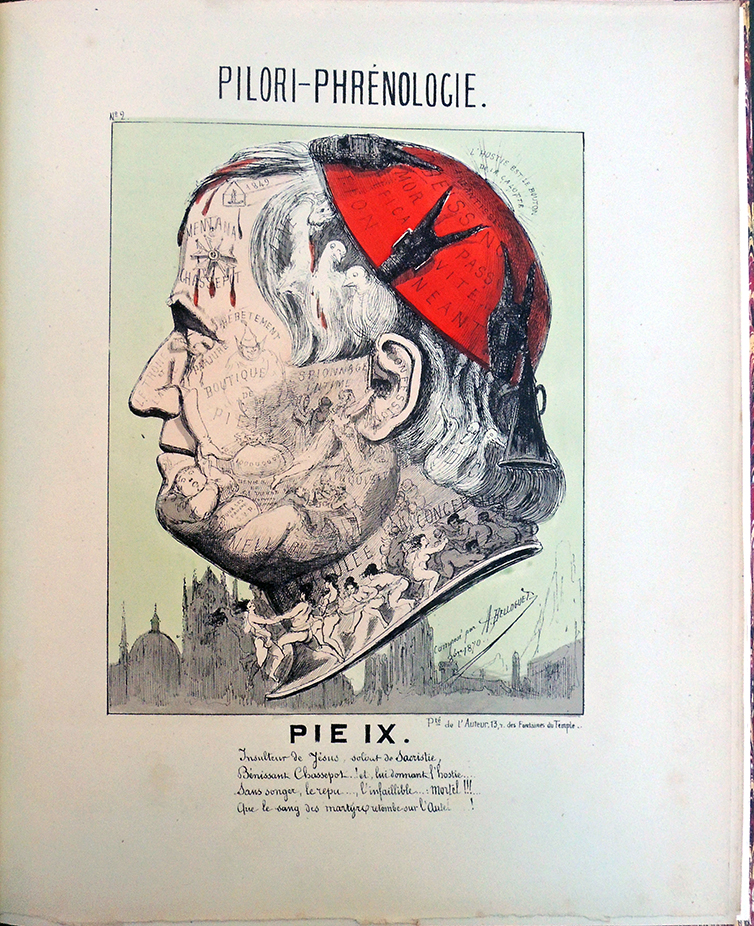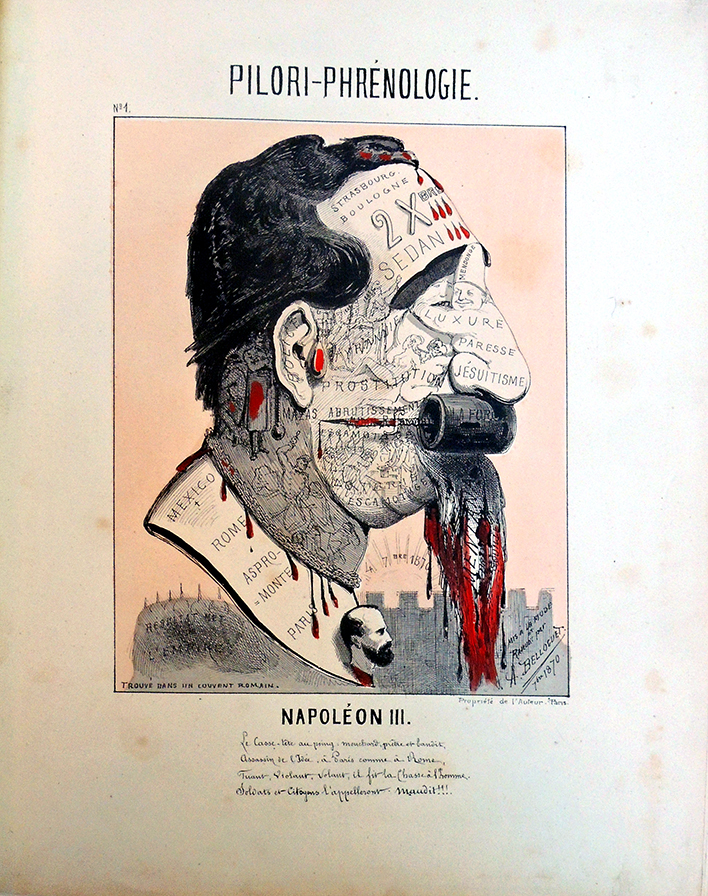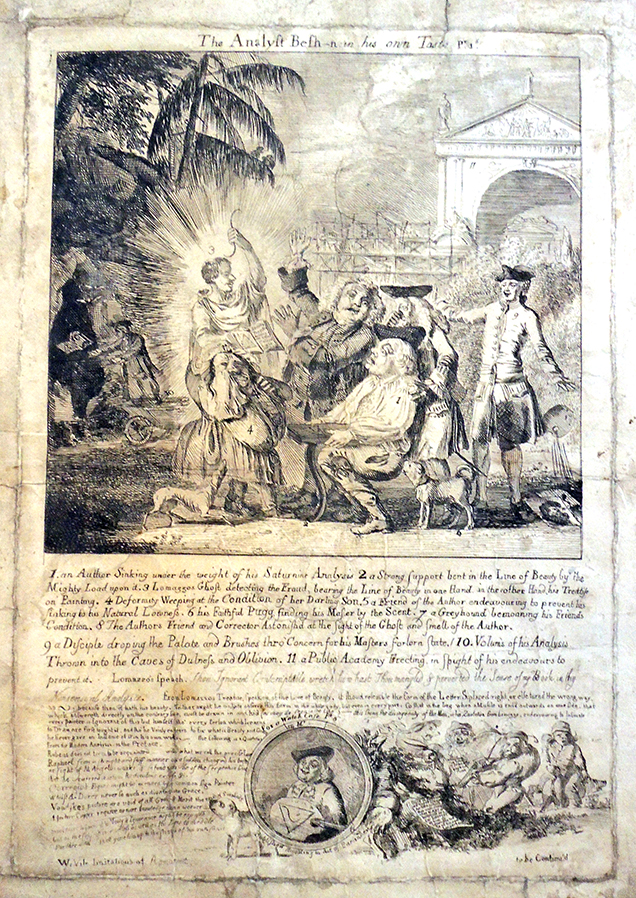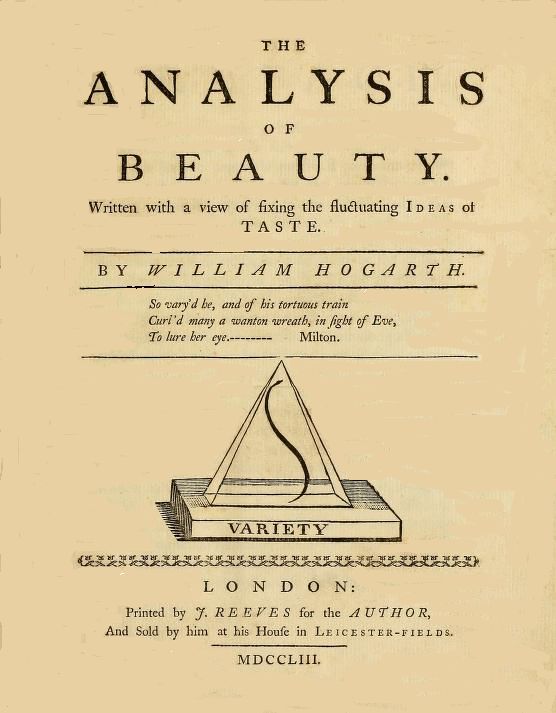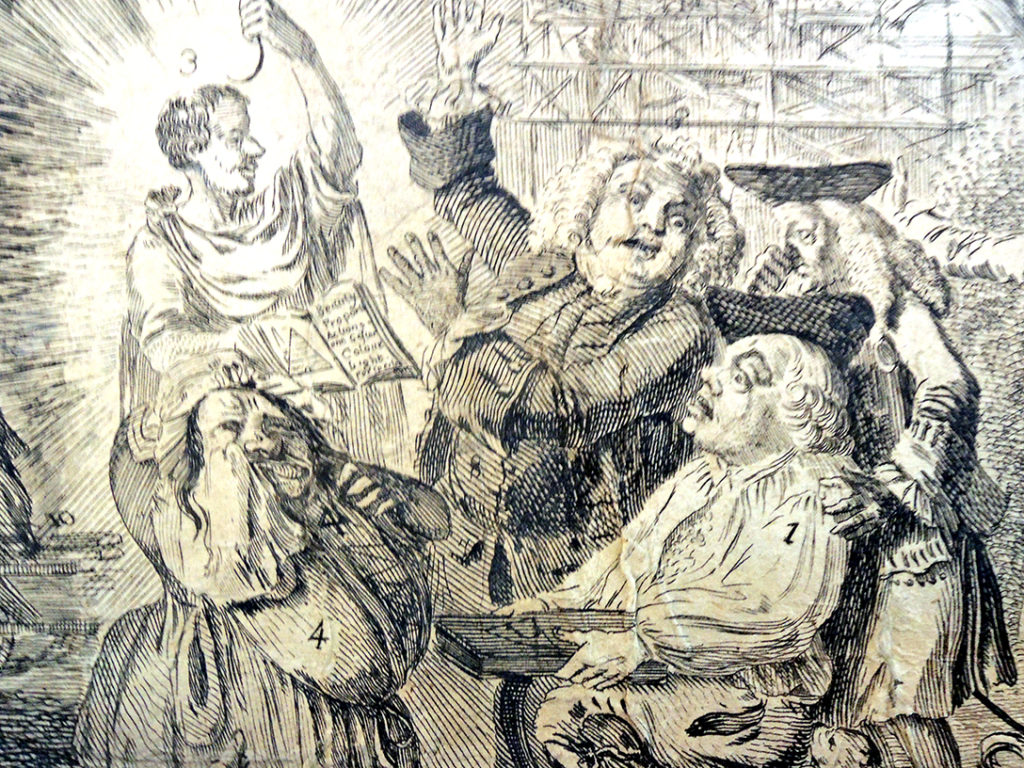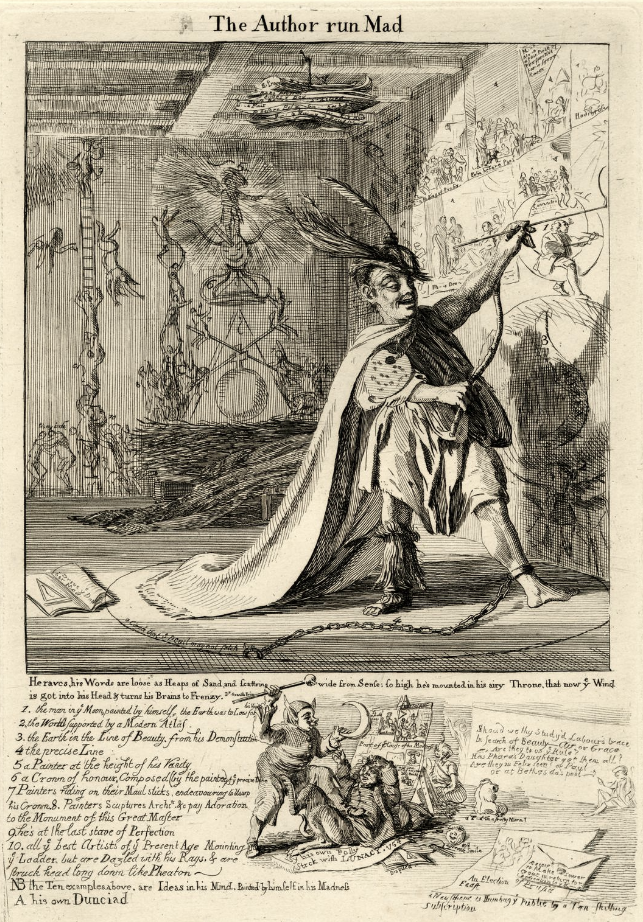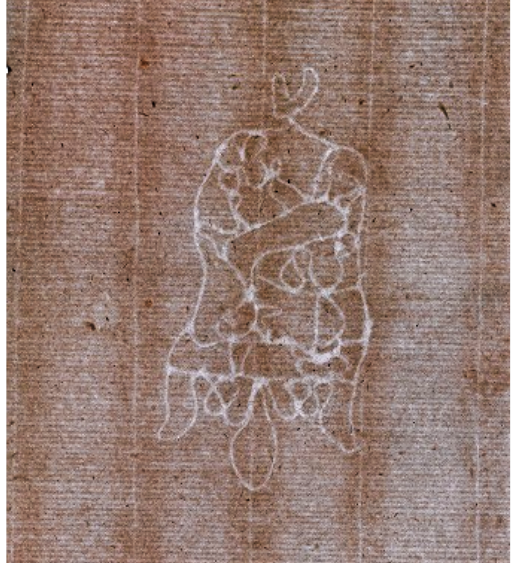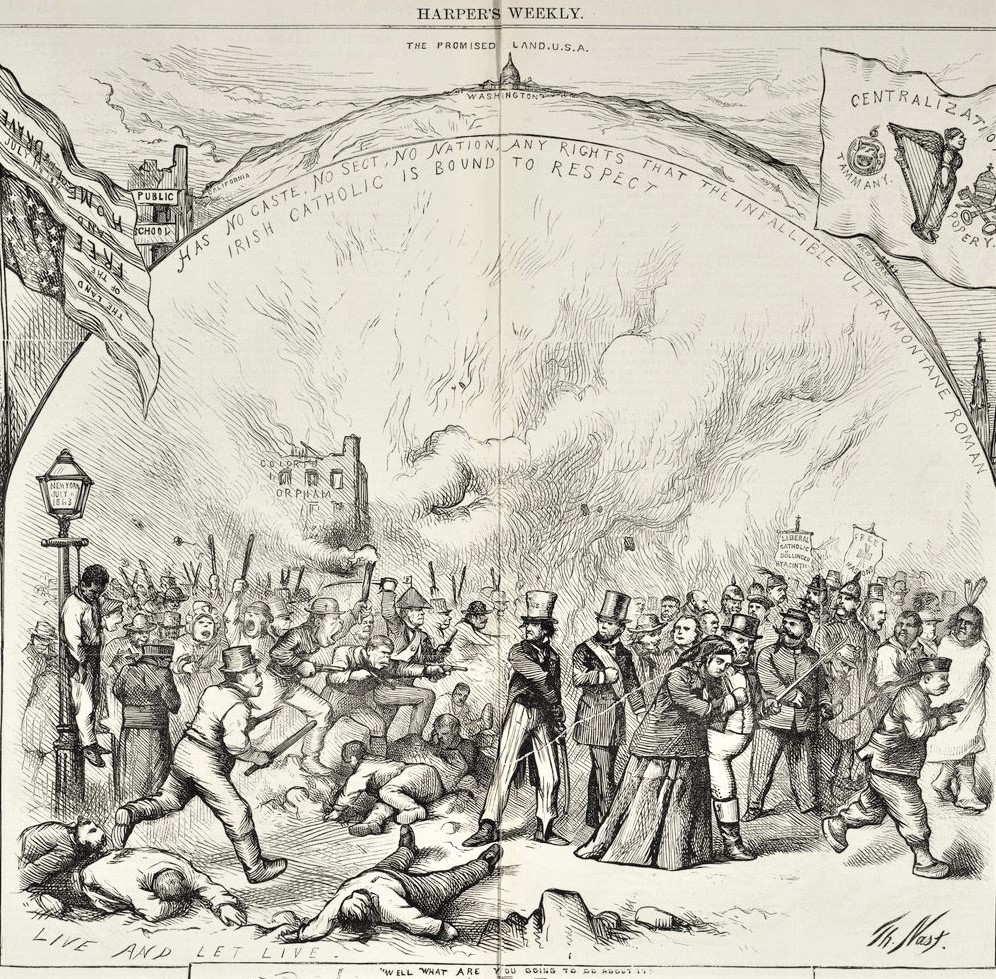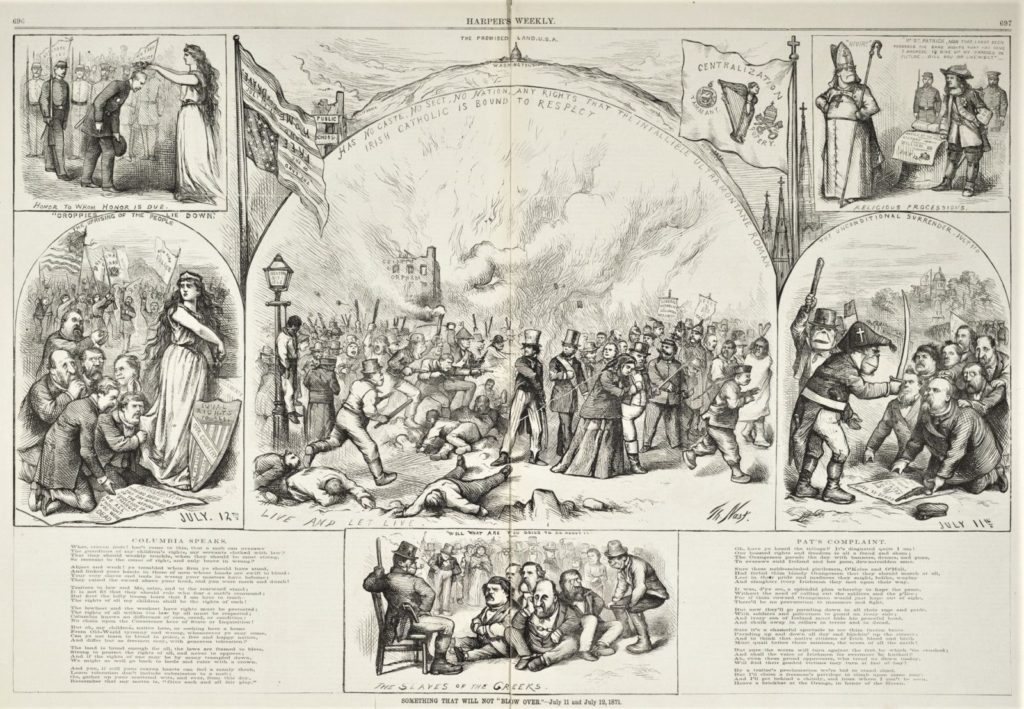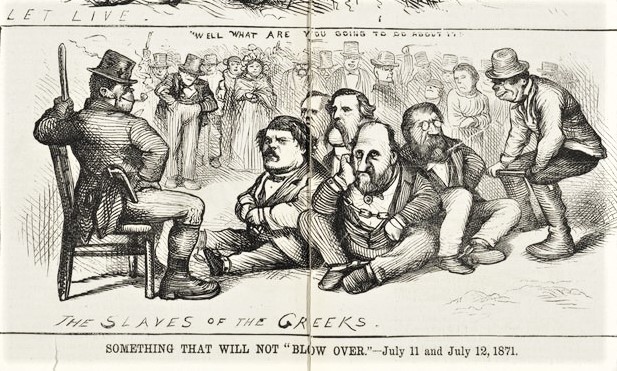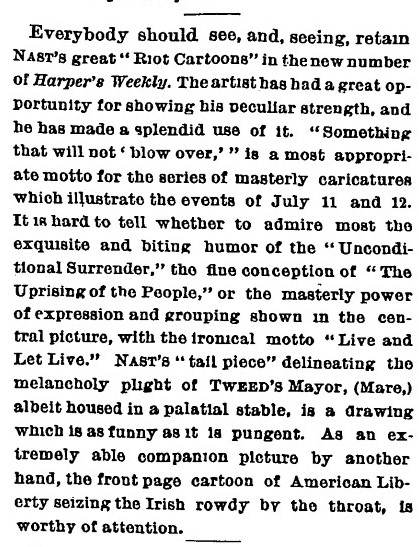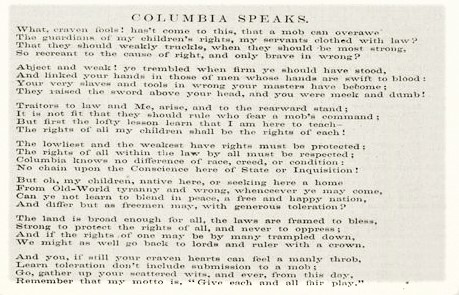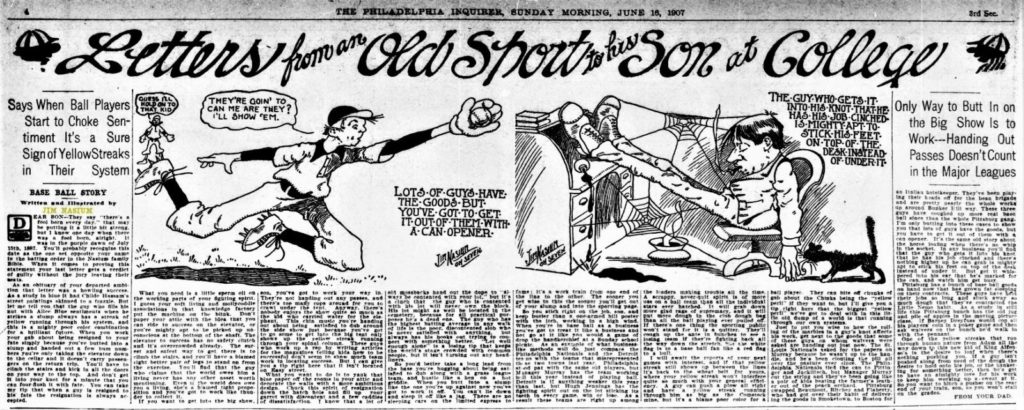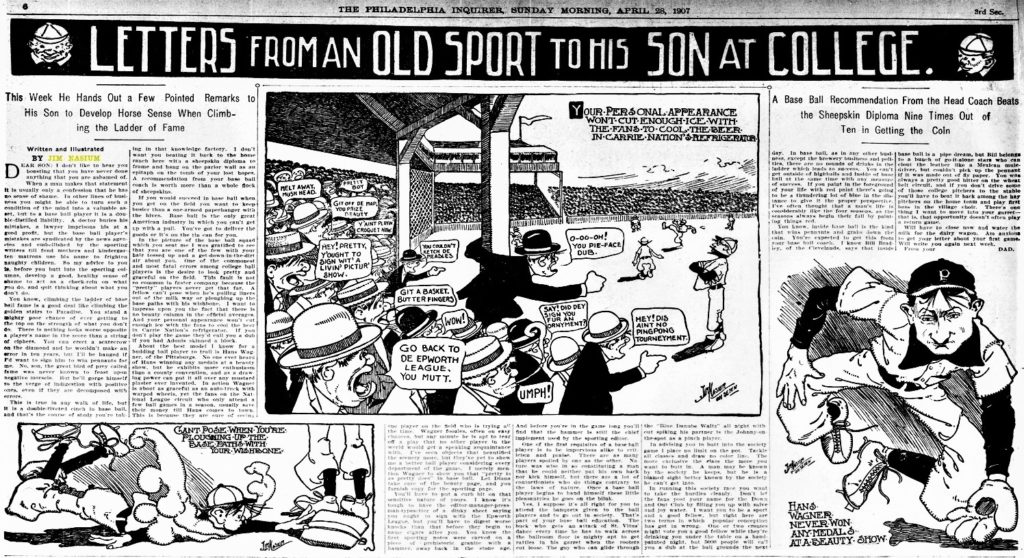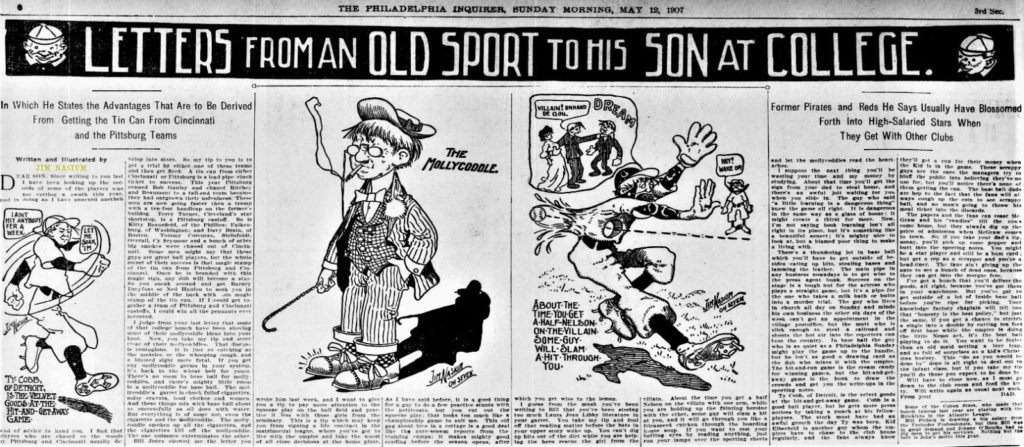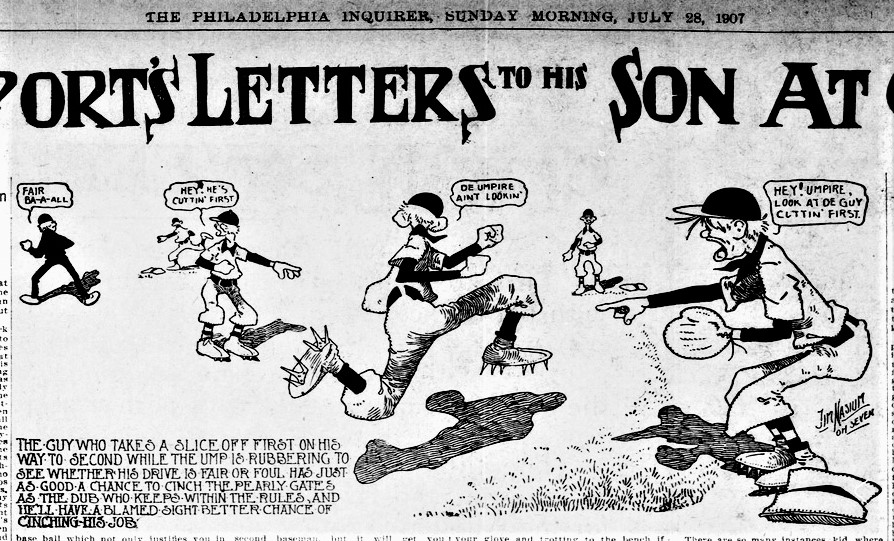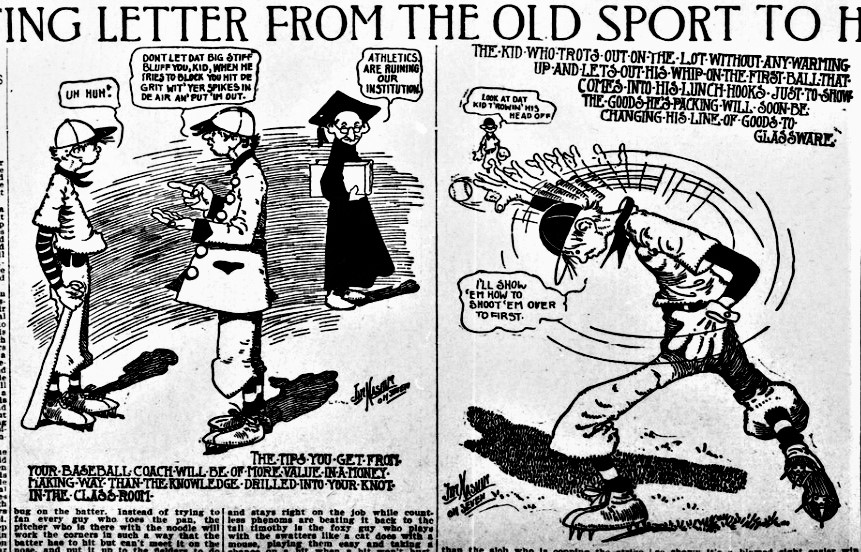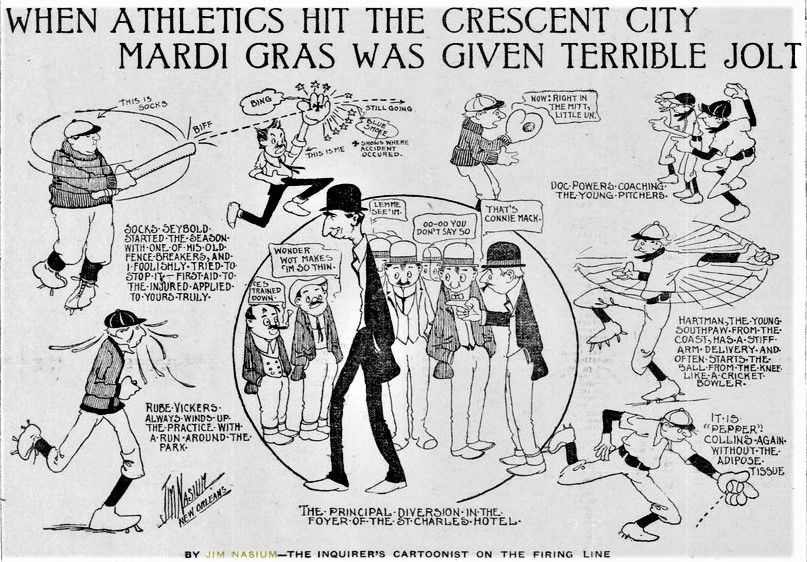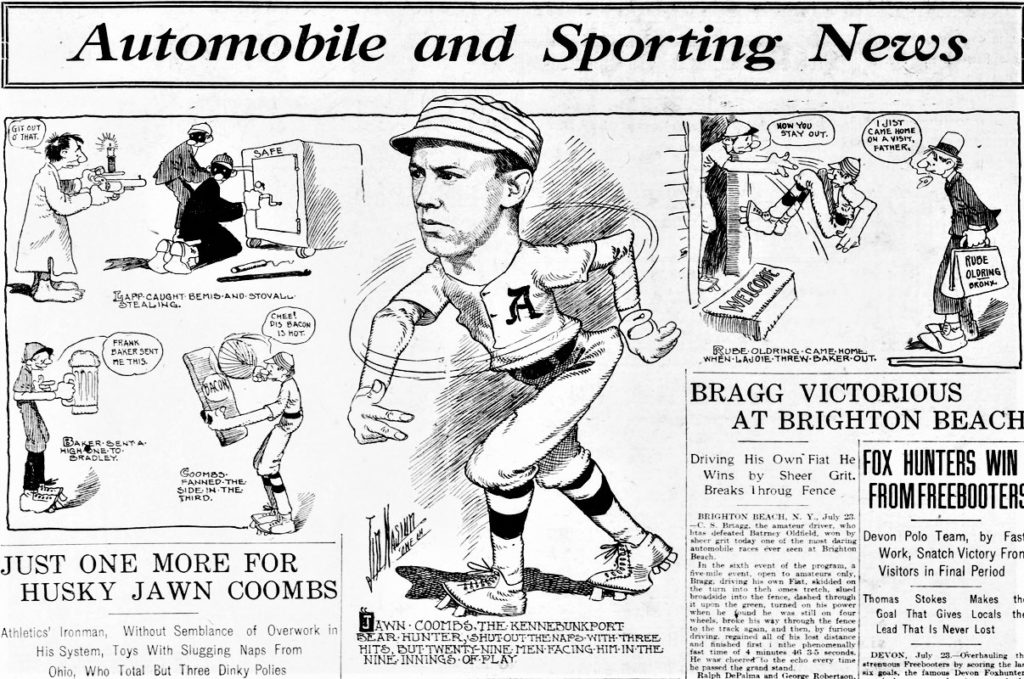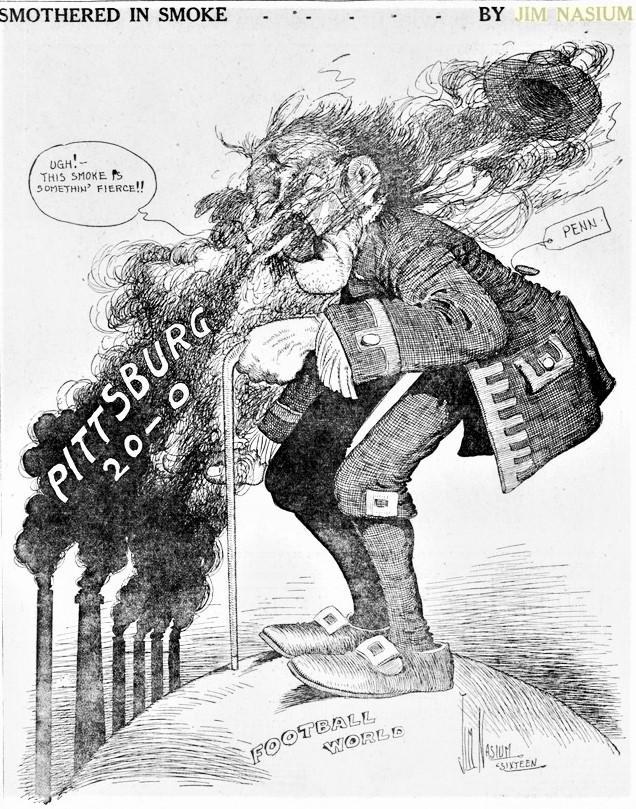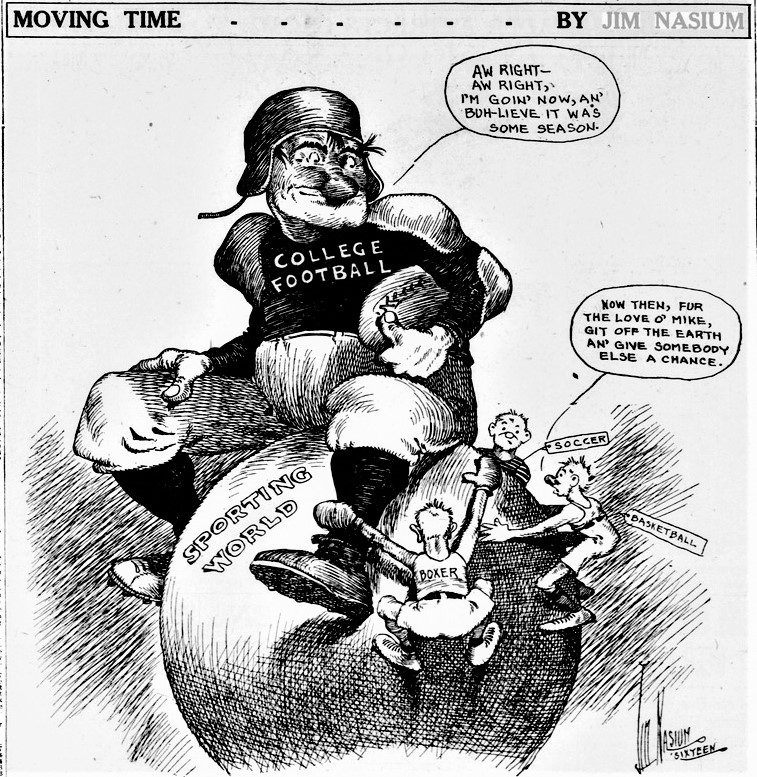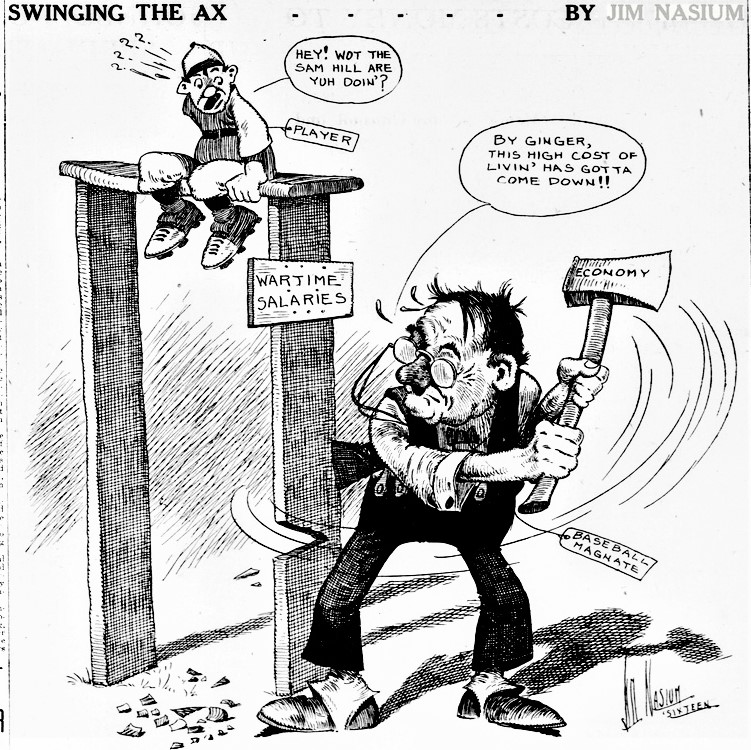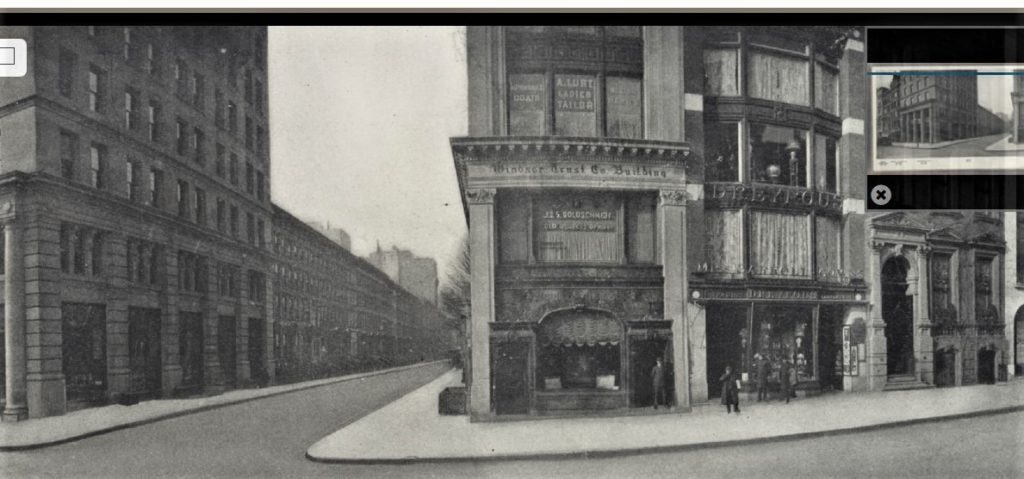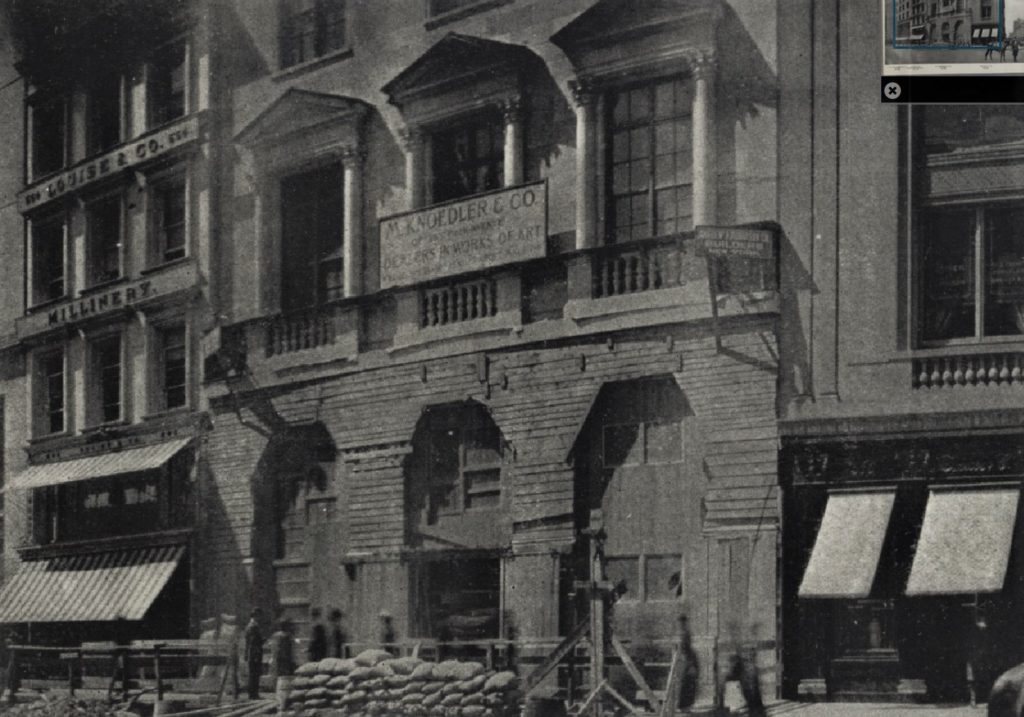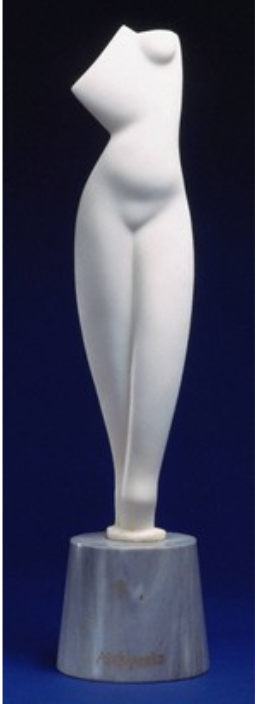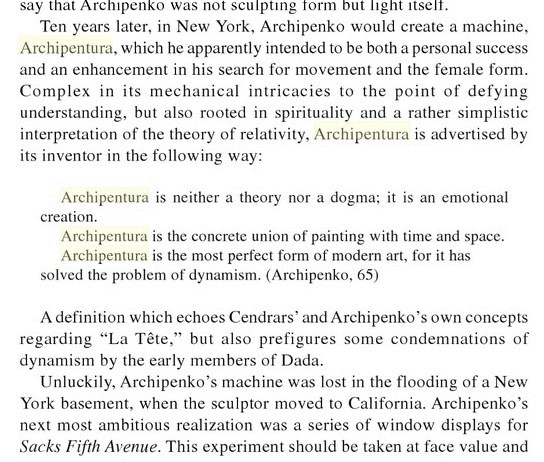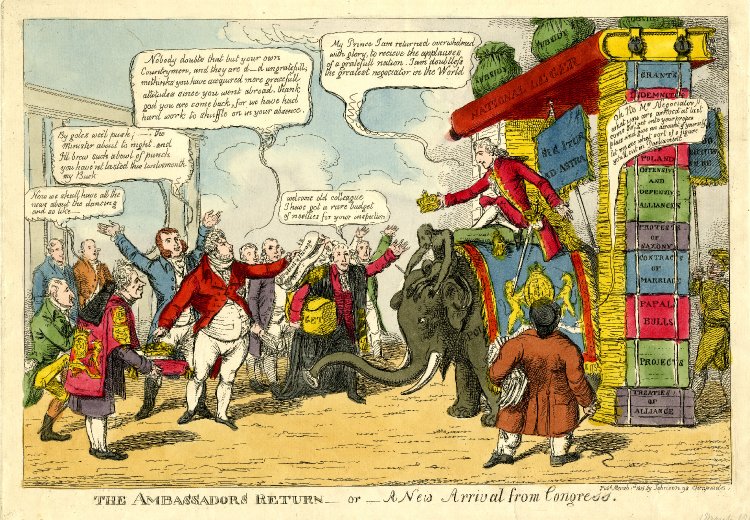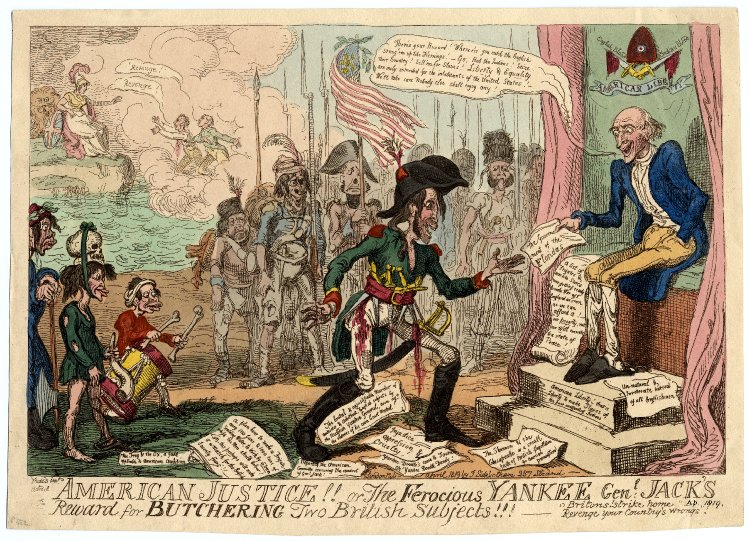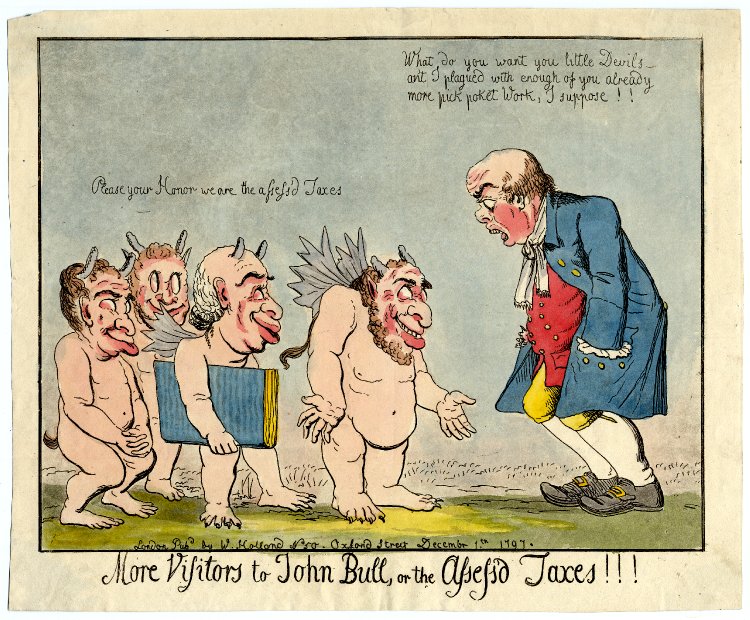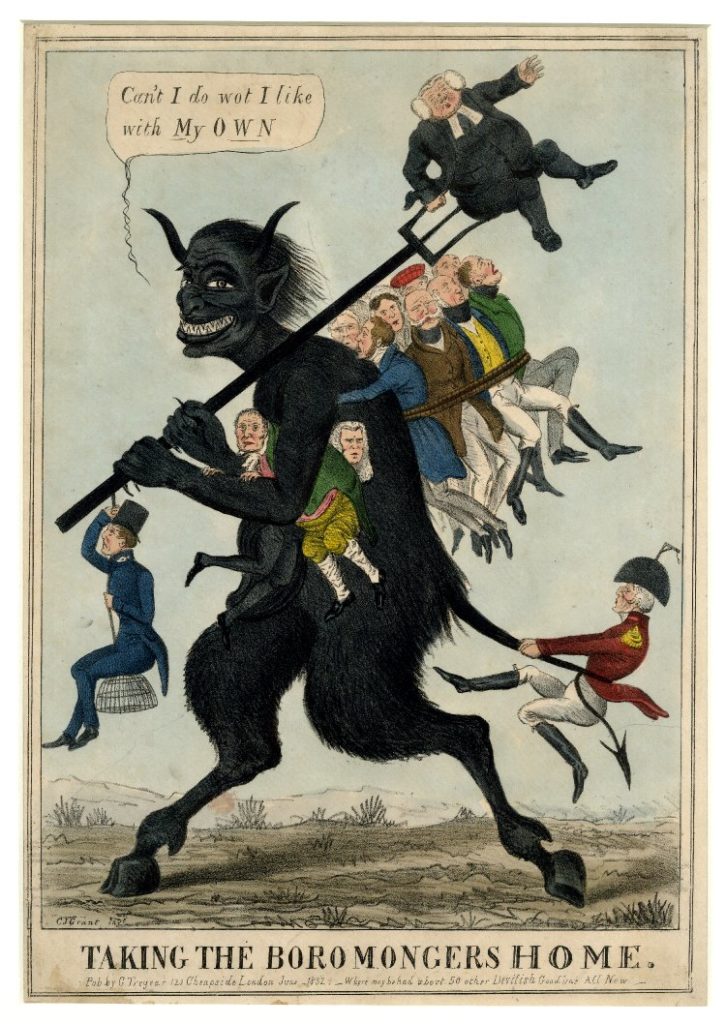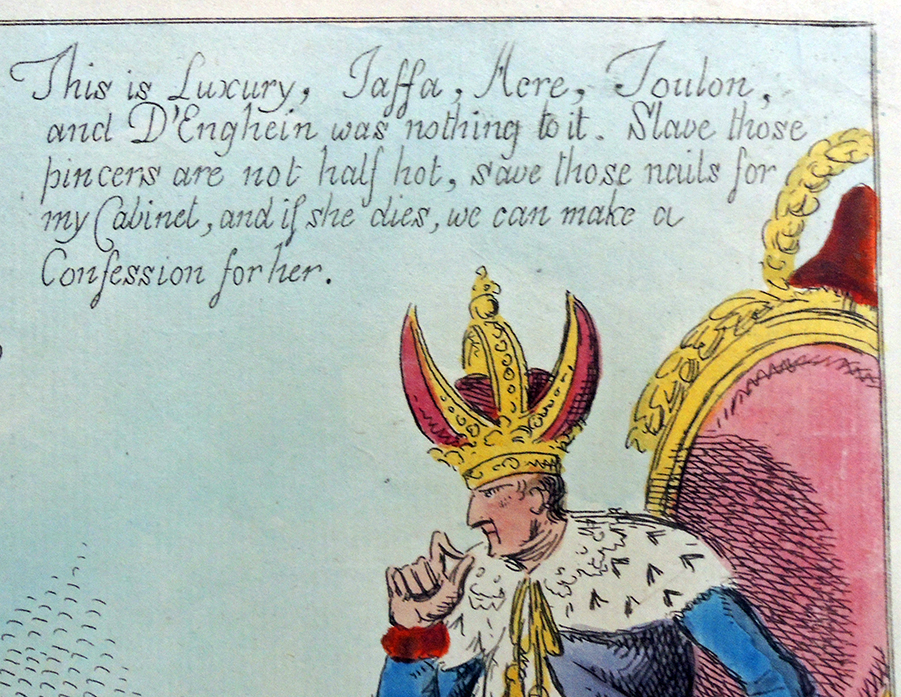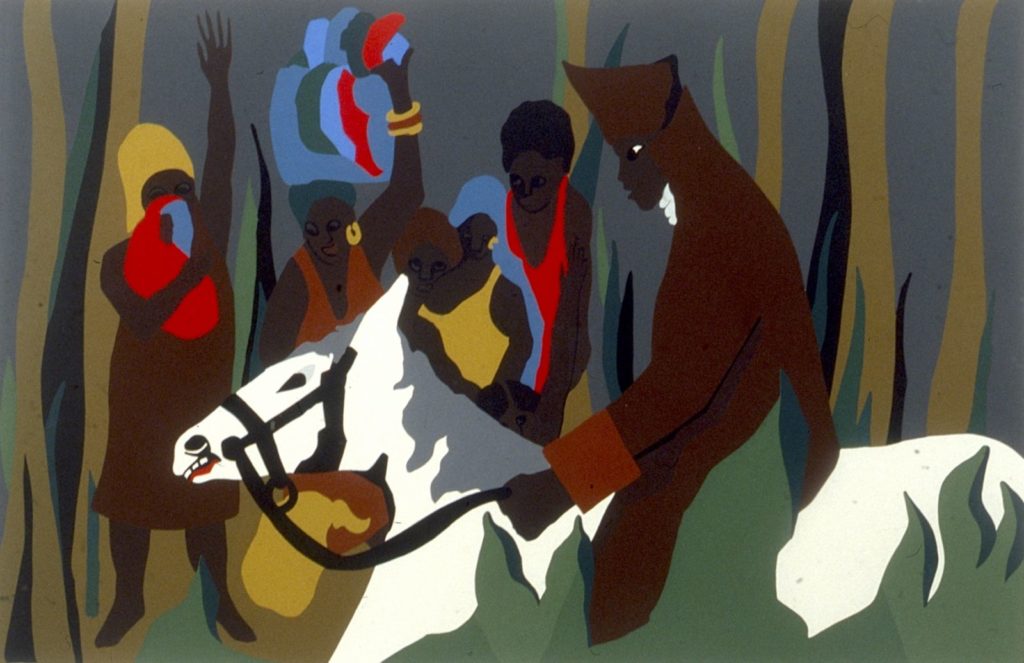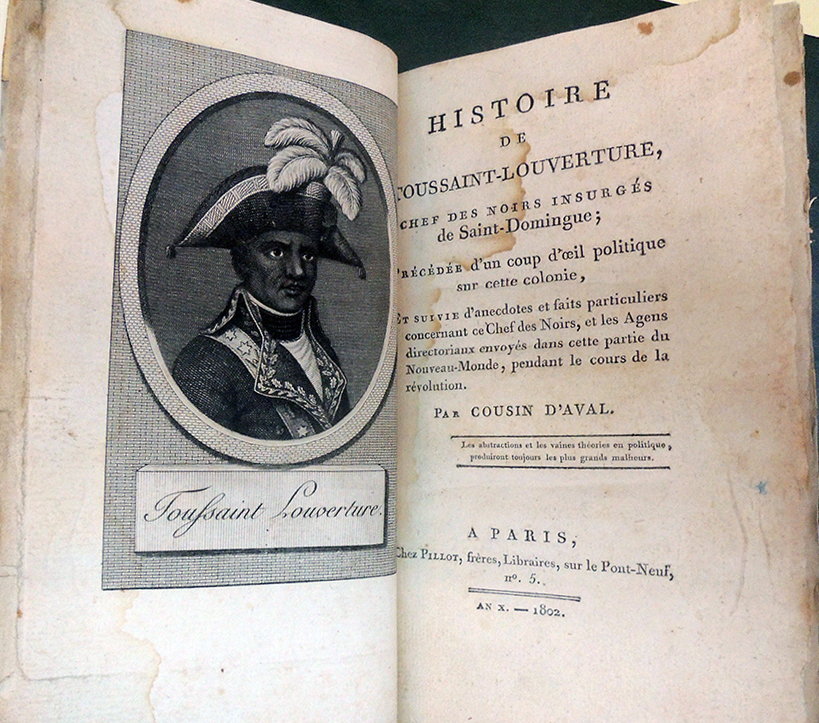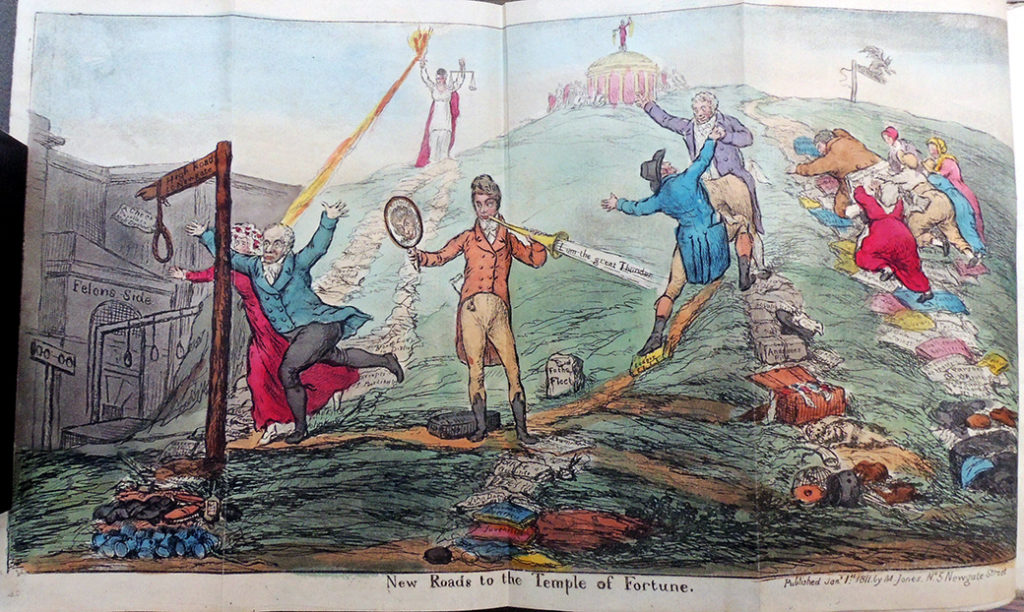
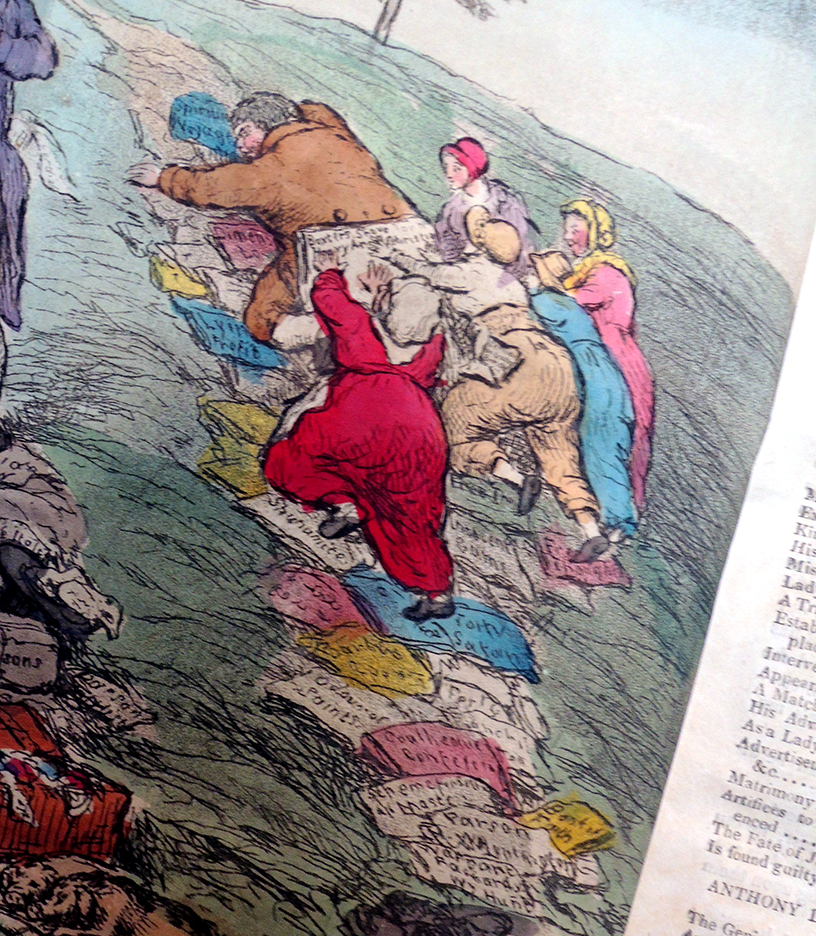
When it began, The Scourge or Monthly Expositor of Imposture and Folly specialized in exposing patent medicines, with a chart of fakes in each issue. Each issue had a folding plate, a hand colored etching, that served as illustrations to various articles, only later evolving to single theme political caricature. The plates in the first volume were all by Samuel De Wilde, known for his theatrical portraits exhibited at the Royal Academy from 1792 until 1821. Later issues include plates by George Cruikshank, Charles Williams, and others.
The First Series was published in 66 monthly numbers 1811 to 1816, bound with a yellow pictorial wrappers. Volumes 1-2 were published by the unidentified M. Jones at 5 Newgate Street and sold by J. Johnston, Cheapside and Goddard, Pall Mall. Beginning with volume 3,William Naunton Jones took over as publisher from the same address. The magazine’s title was altered with volume 7 to The Scourge or Literary, Theatrical, and Miscellaneous Magazine. The Graphic Arts Collection is fortunate to hold a complete set.
January 1811
Samuel De Wilde (1751-1832), “New Roads to the Temple of Fortune” in The Scourge or Monthly Expositor of Imposture and Folly v.1, frontispiece (London: M Jones, January 1, 1811). An illustration to four articles in the magazine: (1) “John King,” pp. 1-27. (2) “James Henry Leigh Hunt,” pp. 46-64. (3) “Anthony Daffy Swinton,” pp. 27-46: (4) “Rev. William Huntington, S.S.,” pp. 64-77.
 “Our Artist has omitted the title of the Caricature, which ought to be MERE BUBBLES.”
“Our Artist has omitted the title of the Caricature, which ought to be MERE BUBBLES.”
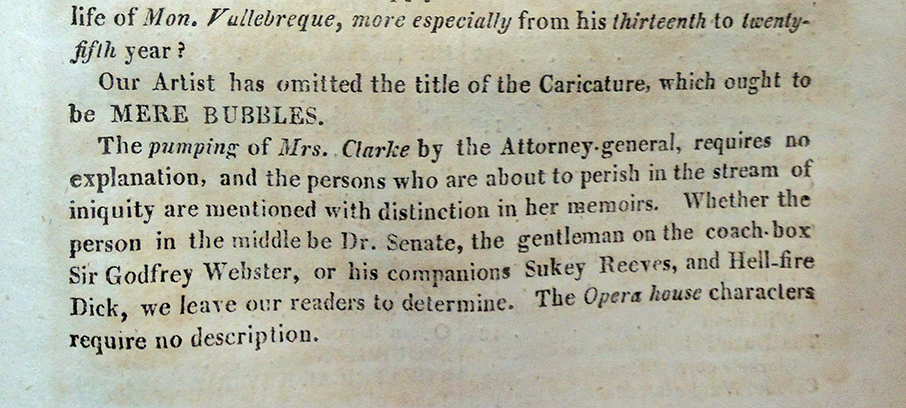 February 1811
February 1811
Samuel De Wilde (1751-1832), [Mere Bubbles] in The Scourge or Monthly Expositor of Imposture and Folly, v.1, before page 85 (London: M Jones, February 1, 1811). An illustration to four articles in the magazine: [1] An account of Mrs. Clarke (pp. 102-36); [2] An account of Sir Godfrey Webster; [3] An account of Mr. William Taylor of the Opera House (pp. 146-64); [4] An account of a quack, Edward Senate, pp. 137-46.
 March 1811
March 1811
Samuel De Wilde (1751-1832), “Battle Royal, or Which Has It” in The Scourge or Monthly Expositor of Imposture and Folly v.1, before p. 175 (London: M Jones, March 1, 1811).
A satire on the hopes of the Opposition that the Prince would dismiss the Perceval Ministry on the establishment of the Regency.
April 1811
Samuel De Wilde (1751-1832), “Truth in Jeopardy, or Power, Versus Freedom” in The Scourge or Monthly Expositor of Imposture and Folly v.1 (London: M Jones, April 1, 1811). On 4 Mar. 1811 Lord Holland moved for an account of all ‘Information “Ex Officio”‘ in libel cases from 1 Jan. 1801 to the end of 1810.
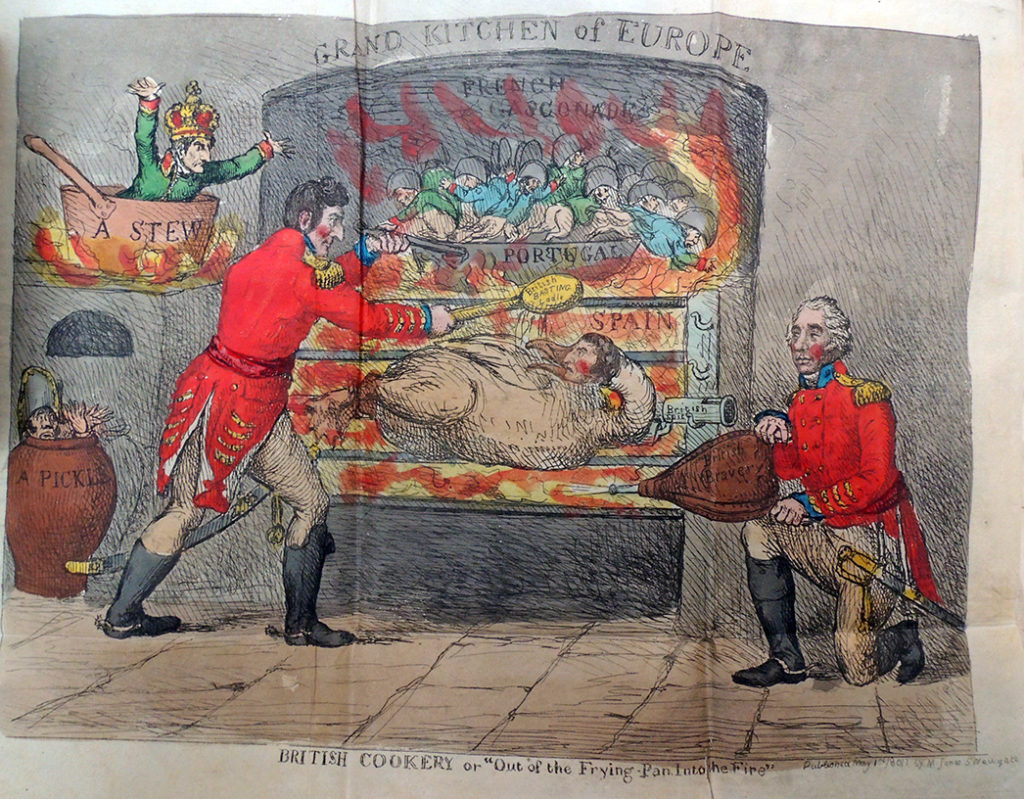 May 1811
May 1811
Samuel De Wilde (1751-1832), “British Cookery or ‘Out of the Frying-Pan into the Fire’” in The Scourge or Monthly Expositor of Imposture and Folly v.1 (London: M Jones, May 1, 1811). The plate is explained; “That Ney should be in a pickle and Buonaparte in a stew John Bull will think very natural. General Graham . . . [gives] new vigor to the flame of patriotism.” The spitted goose is Massena.
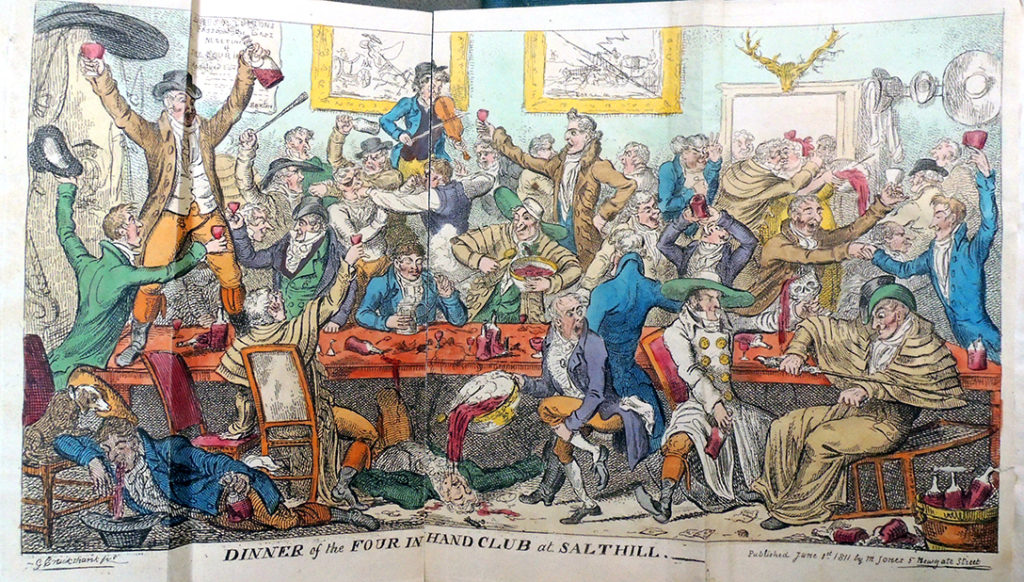 June 1811
June 1811
George Cruikshank (1792-1878), “Dinner of the Four in Hand Club at Salthill” in The Scourge or Monthly Expositor of Imposture and Folly, v.1, before p. 431. (London: M Jones, June 1, 1811). Illustration to an article ‘The Dinner at Salt Hill’ in The Satirist, March 1, 1811. The Four-in-hand Club met in Cavendish Square, seven members only. The president was C. Buxton (probably Charles, 1787-1817). There is a second state, with the title Bang-up Dinner or Love and Lingo, a frontispiece to Lexicon Balatronicum, A Dictionary of Buckish Slang University Wit, and Pickpocket Eloquence, compiled originally by Captain Grose . . .’, 1811.
July 1811
George Cruikshank (1792-1878), “The Return to Office” in The Scourge or Monthly Expositor of Imposture and Folly v.2, frontispiece (London: M Jones, July 1, 1811). Also an illustration to The Duke of York, the Whigs and the Burdettites, pp. 1-5.
August 1811
George Cruikshank (1792-1878), “The Blessing of Paper Money, or King a Bad Subject” in The Scourge or Monthly Expositor of Imposture and Folly v.2, p. ? (London: M Jones, August 1, 1811).
September 1811
George Cruikshank (1792-1878), “Quadrupeds; or the Managers Last Kick. Last Scene” in The Scourge, or Monthly Expositor of Imposture and Folly v.2, before p. 177 (London: M Jones, September 1, 1811). [On 18 July 1811 a heroic, tragic, operatic drama with the title of the print was played for the first time by the English Opera Company at the Lyceum.]
October 1811
George Cruikshank (1792-1878), “The Examination, of a Young Surgeon” in The Scourge or Monthly Expositor of Imposture and Folly, v.2, before p. 263 (London: M Jones, October 1, 1811). The plate illustrates ‘Medical Science Exemplified’, pp. 263-8, ridiculing the education and examination of surgeons with special reference to two Scottish examiners, clearly David Dundas and Everard Home, both Serjeant-surgeons to the King.
November 1811
George Cruikshank (1792-1878), “Interior View of the House of God” in The Scourge or Monthly Expositor of Imposture and Folly, v.2, before p. 349 (London: M Jones, November 1, 1811). A savage account of Carpenter, a paper-maker of Neckinger House, appeared in the August number of The Scourge v.2. 94-102. The ‘tickets’ must be the half-sheets signed and sealed by Joanna Southcott, by which the faithful were ‘sealed’ or certificated for the millennium.
December 1811
George Cruikshank (1792-1878), “Princely Piety, or the Worshippers at Wanstead” in The Scourge or Monthly Expositor of Imposture and Folly v. 2, before p. 473. (London: M Jones, December 1, 1811).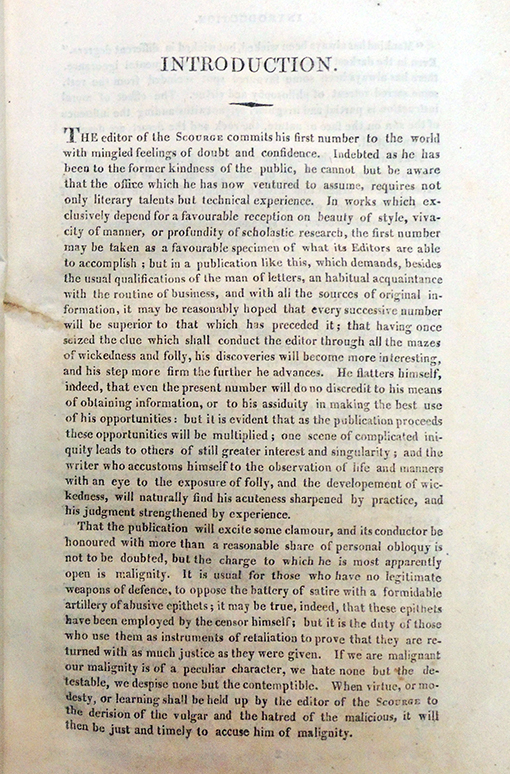
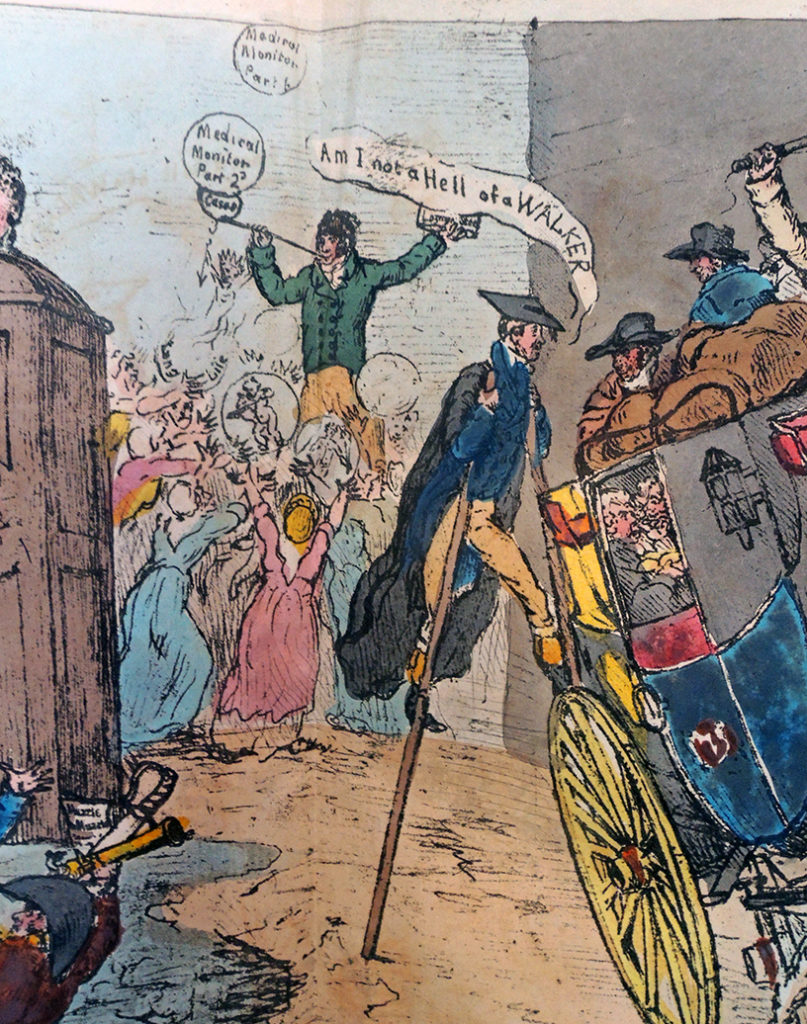 Vol. 3
Vol. 3
No. 13. The Rehearsal, or the Baron and the Elephant. January 1st, 1812.
No. 14. The Mountebanks, &c., &c. February 1st, 1812.
No. 15. Princely Amusements, &c., &c. March 1st, 1812.
No. 16. Princely Predictions, &c., &c. April 1st, 1812.
No. 17. The Prince of Wales, &c., &c. May 1st, 1812.
No. 18. The Antiquarian Society. June 1st, 1812.
Vol. 4
No. 19. The Political Medley, &c., &c. July 1st, 1812.
No. 20. The Cow Pox Tragedy. 1812.
No. 21. The Coronation of the Empress of the Nairs. September 1st, 1812.
No. 22. An Excursion to R Hall. October 1st, 1812.
No. 23. The Court of Love, &c., November 12th, 1812.
No. 24. Management of Butts and Hogsheads. December 1st, 1812.
Vol. 5
No. 25. Quadrupeds, or, Little Bonev’s Last Kick. January 1st, 1813.
No. 26. The Storming of Monopoly Fort. February 1st, 1813.
No. 27. John Bull in the Cellar, &c., kc. March 1st, 1813.
No. 28. State Mysteries, or, a Vision of Pall Mall. April 1st, 1813.
No. 29. The Delicate Investigation. May 1st, 1813.
No. 30. A Sepulchral Enquiry into English History. June 1st, 1813.
Vol. 6
No. 31. John Bull in the Council Chamber. July 1st, 1813.
No. 32. Preparing John Bull for General Congress. August 1st, 1813.
No. 33. The Regency Park. September 1st, 1813.
No. 34. Rival Candidates for the Vacant Bays. Oct. 1st, 1813.
No. 35. Benefits of a Plentiful Harvest, November. 1st, 1813.
No. 36. The Sale of the Coal Heaver’s Scraps. Decr.1st, 1813.
Vol. 7—”The Scourge or Literary, Theatrical, and Miscellaneous Magazine.”
No. 37. Smuggling in High Life. January 1st, 1814.
No. 38. The Divine and the Donkey, or Petworth Frolicks. February 1st, 1814.
No. 39. Imperial Botany, &c., &c. March 1st, 1814.
No. 40. Modern Idolatry, or, Editors and Idols. April 1st, 1814.
No. 41. Nic, alias Nap’s March to Elba. May 1st, 1814.
No. 42. Royal Munificence, &c., &c. June 1st, 1814.
Vol. 8
No. 43. Spirits at Work—Joanna Conceiving. July 1st, 1814.
No. 44. The R 1 Pedagogue and his Ushers. August 1st, 1814.
No. 45. A Paradise for Fools, &c. In three compartments. September. 1st, 1814.
No. 46. Hocus Poems, or, Conjurers Raising the Wind. October 1st, 1814.
No. 47. Delivering a Prophetess. Nov. 1st, 1814.
No. 48. The Siege of St. Quentin. December. 1st, 1814.

Vol. 9
No. 49. The Property Tax—Civic Champions, or, the Darling in Danger. January 2, 1815.
No. 50. Amusements at Vienna, &c., &c. Feb. 1st, 1815.
No. 51. John Bull’s Three Stages. In three compartments. March 1st, 1815.
No. 52. The High Winds of March blowing Events from all quarters. April 1815.
No. 53. The Phomix of Elba resuscitated by Treason. May 1st, 1815.
No. 54. Preparing for War. June 1st, 1815.
Vol. 10
No. 55. Nebuchadnazzars Dream. July 1st, 1815.
No. 56. A Financial Survey of Cumberland, &c. August 1st, 1815.
No. 57. Napoleon’s Trip from Elba to Paris, and from Paris to St. Helena. Sept. 1st, 1815.
No. 58. Boxiana, or, The ‘Fancy. October. 1st, 1815.
No. 59. The Progress of Disappointment, or the Hopes of a Day. November 1st, 1815.
No. 60. State of Politicks at the close of the year 1815. December 1st, 1815.
Vol. 11
No. 61. Royal Christmas Boxes and New Year’s Gifts, 1815 & 16. January 1st, 1816.
No. 62. Odds and Ends for February, 1816. In three compartments. Feb. 1st, i816.
No. 63. The Pall Mall Apollo, or, R tv in a Blaze. March 1st, 1816.
No. 64. Royal Nuptials. April 1st, 1816.
No. 65. Economy—Anticipation. Two compartments. May 1st, 1816.
No. 66. A Bazaar. June 1st 1816.
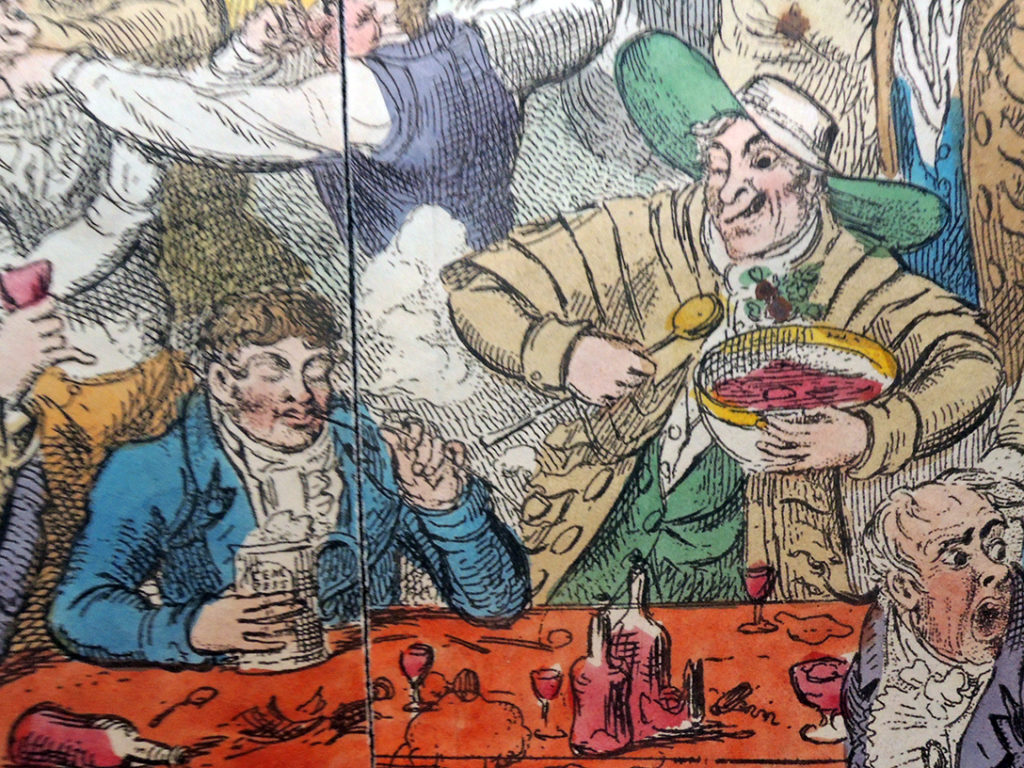
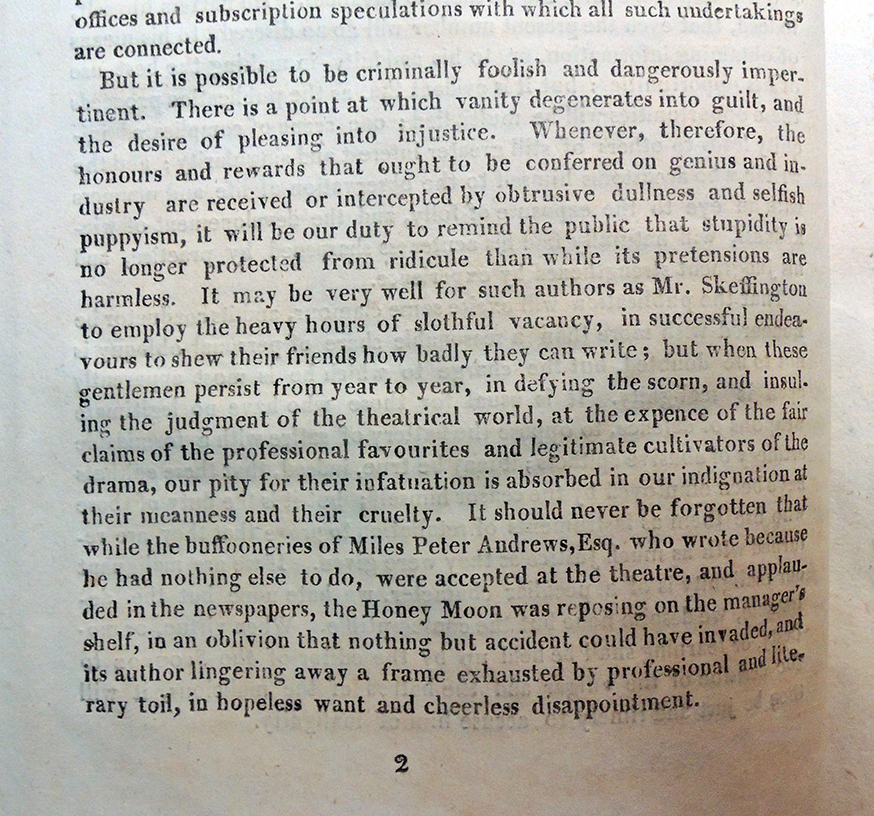
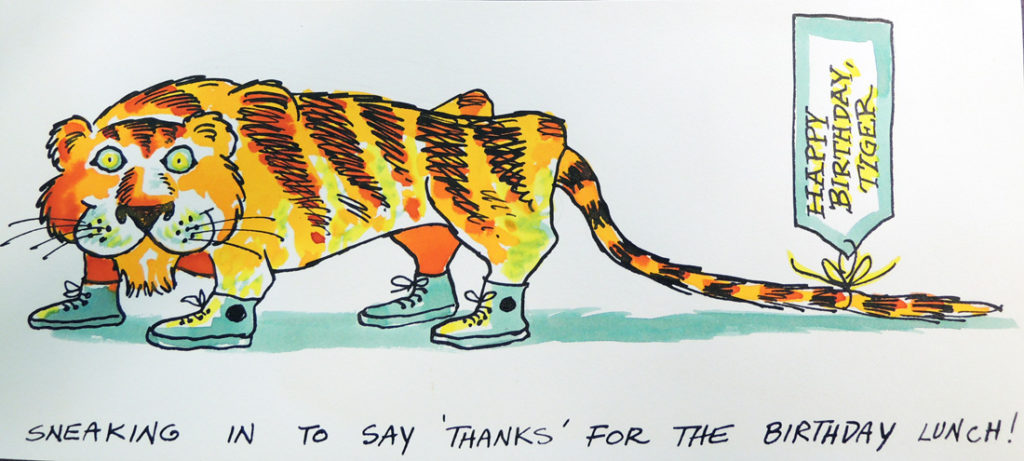 Henry Martin ’48, Sneaking in to say ‘thanks’…, no date. Pen and marker drawing. Henry Martin Cartoon Collection GAX2011.00353. Gift of David K. Reeves ’48.
Henry Martin ’48, Sneaking in to say ‘thanks’…, no date. Pen and marker drawing. Henry Martin Cartoon Collection GAX2011.00353. Gift of David K. Reeves ’48.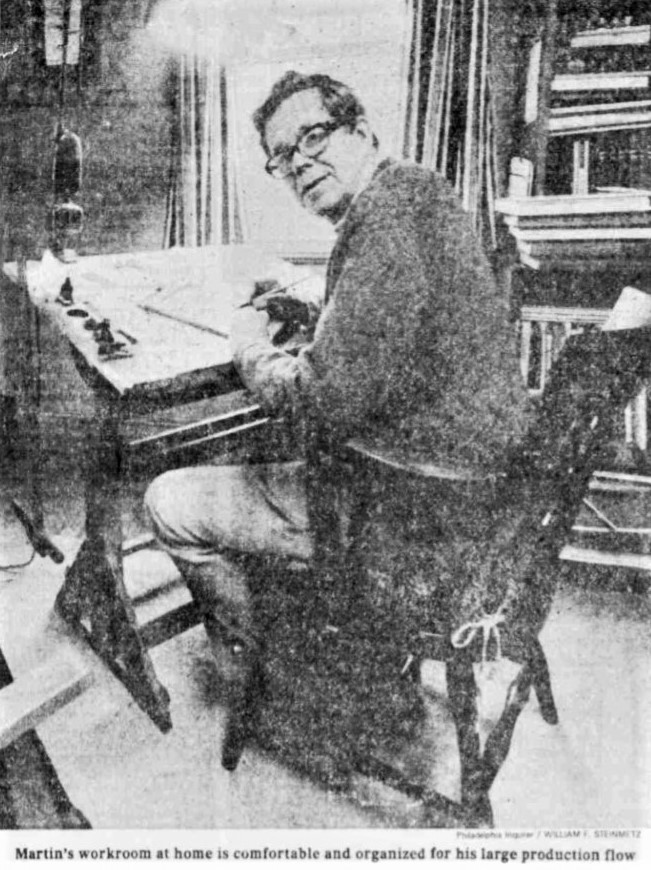 Philadelphia Inquirer, March 4, 1979
Philadelphia Inquirer, March 4, 1979 “That’s Harry Phillipaton and his wild imaginings.”
“That’s Harry Phillipaton and his wild imaginings.”
